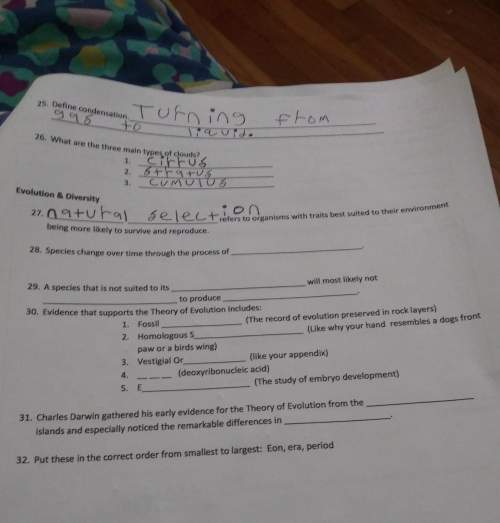
Physics, 17.10.2019 16:30 jacckiie4069
Because the earth rotates about its axis, a point on the equator experiences a centripetal acceleration of 0.033 7 m/s2, while a point at the poles experiences no centripetal acceleration. (a) show that at the equator the gravitational force on an object must exceed the normal force required to support the object. that is, show that the object's true weight exceeds its apparent weight. (b) what is the apparent weight at the equator and at the poles of a person having a mass of 75.0 kg

Answers: 1


Another question on Physics

Physics, 22.06.2019 03:50
The force acting on a beam was measured under the same operating conditions and a sample of 5 data points was collected. this process was repeated by 3 observers. the pooled standard deviations of these 3 data sets was 1.21. determine the true mean force using all pooled data (with a 95% probability). the result should look like this: true mean = mean +/- margin of error
Answers: 1

Physics, 22.06.2019 04:50
Unpolarized light whose intensity is 1.19 w/ is incident on a polarizer. (a) what is the intensity of the light leaving the polarizer? (b) if the analyzer is set at an angle of = 41.0∘ with respect to the polarizer, what is the intensity of the light that reaches the photocell?
Answers: 1

Physics, 22.06.2019 07:20
Aman throws a football straight into the air. as it rises, it slows down. which type of energy is the football gaining?
Answers: 2

You know the right answer?
Because the earth rotates about its axis, a point on the equator experiences a centripetal accelerat...
Questions

Mathematics, 13.10.2019 21:30

Health, 13.10.2019 21:30


Mathematics, 13.10.2019 21:30

Mathematics, 13.10.2019 21:30


Mathematics, 13.10.2019 21:30



History, 13.10.2019 21:30

Chemistry, 13.10.2019 21:30

History, 13.10.2019 21:30

Mathematics, 13.10.2019 21:30


History, 13.10.2019 21:30





 and
and  , hence
, hence 


 and the gravitational force
and the gravitational force  (also called true weight) are directed "downward", while the normal force
(also called true weight) are directed "downward", while the normal force  (also called apparent weight) is directed "upward". Therefore we have the following equation:
(also called apparent weight) is directed "upward". Therefore we have the following equation: (1)
(1) being
being  the mass and
the mass and  the acceleration due gravity
the acceleration due gravity being
being  the centripetal acceleration at the equator
the centripetal acceleration at the equator (2)
(2) (3)
(3) (4)
(4) (5)
(5)

 :
: (8)
(8) (8) is rewritten as:
(8) is rewritten as: (9)
(9) (10)
(10) (11)
(11)


